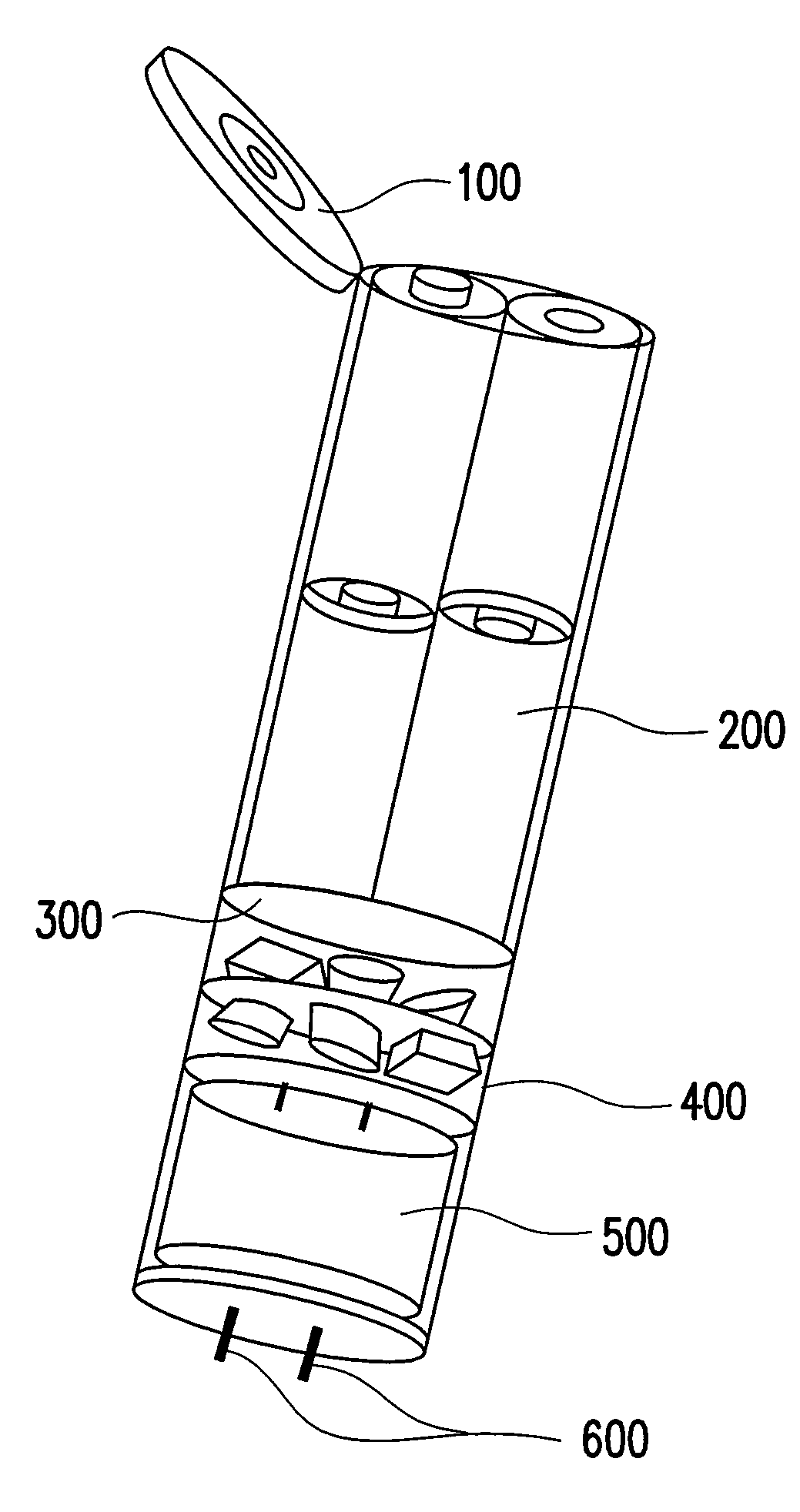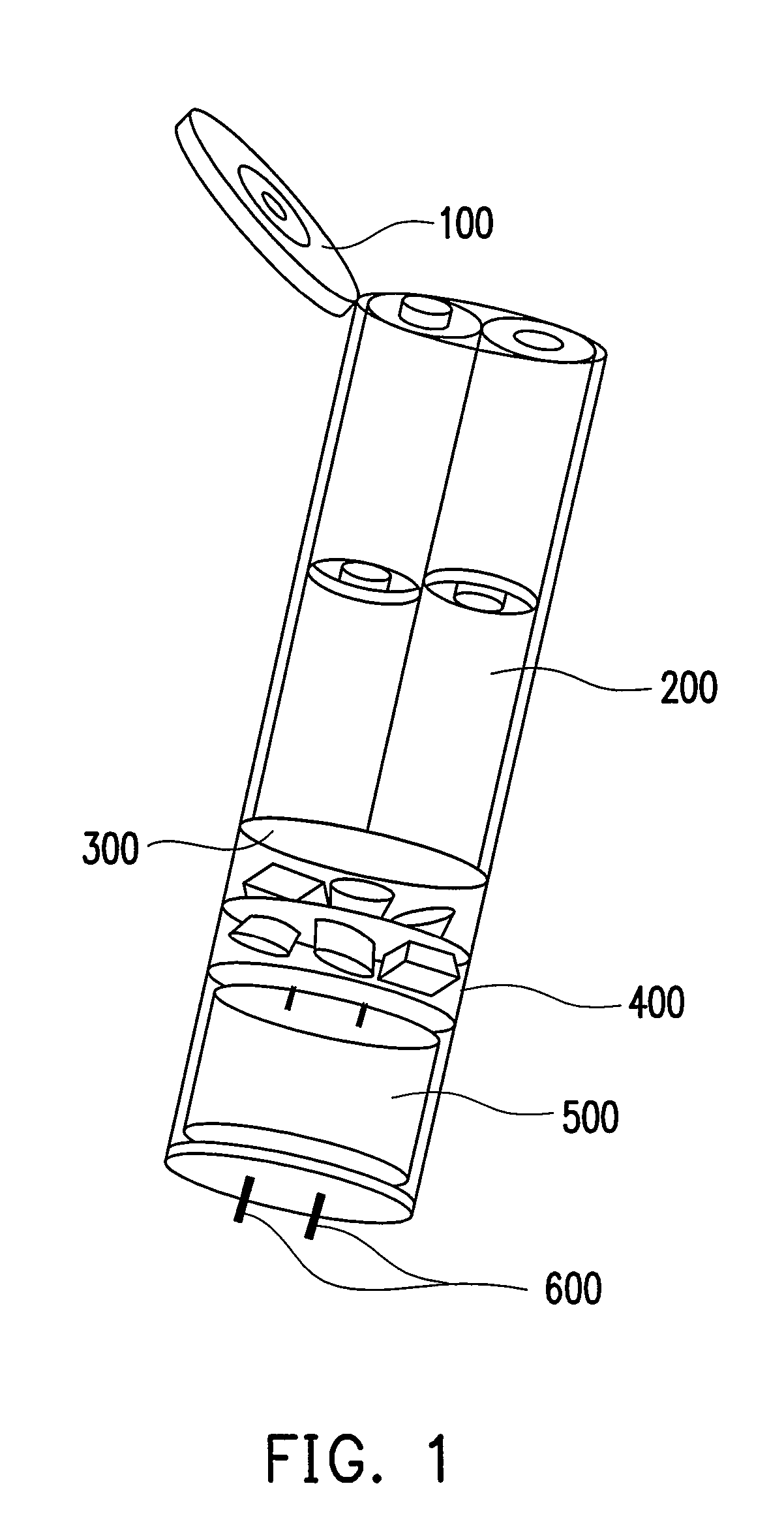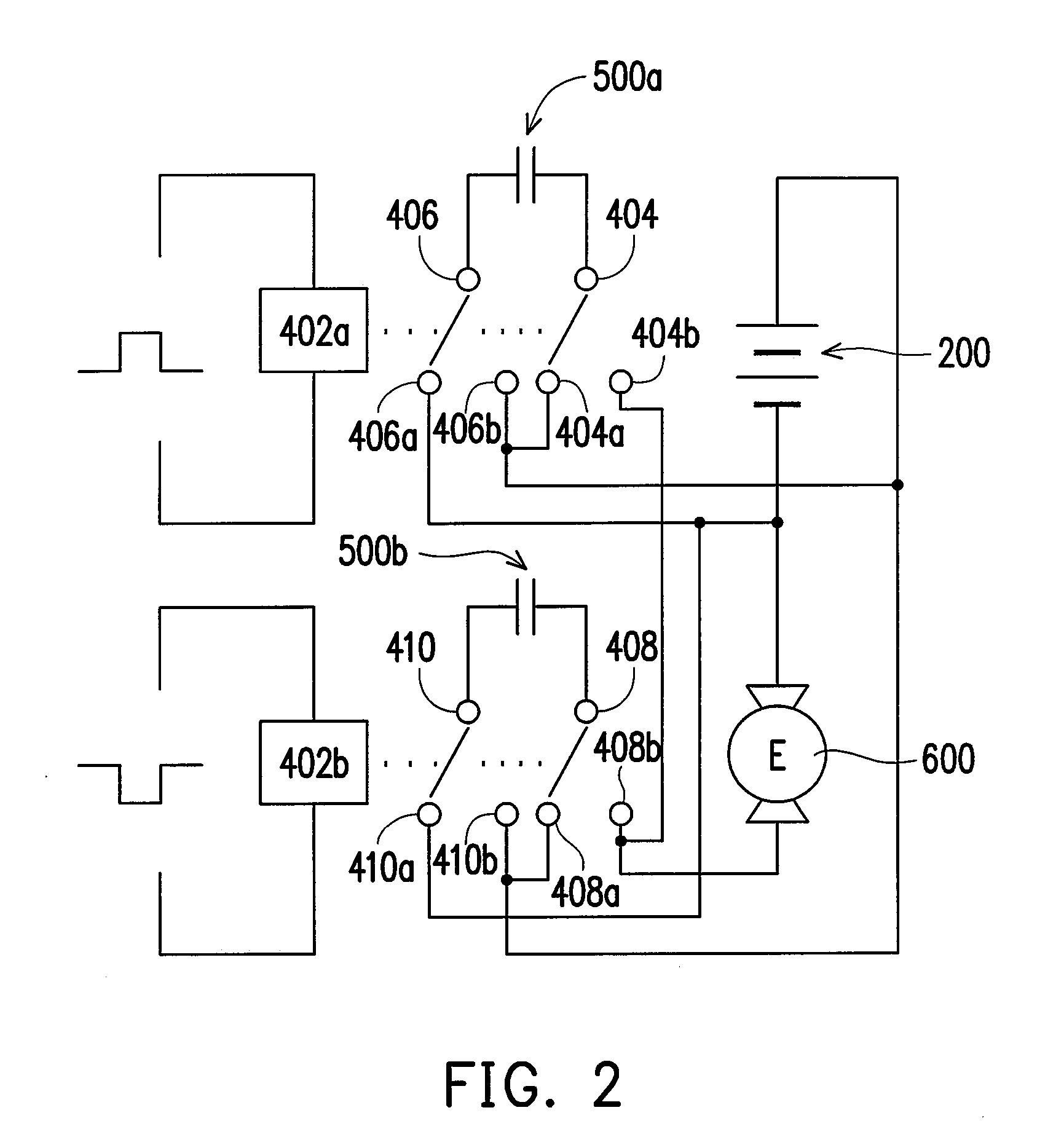Pocket-size ozone generator
a ozone generator and pocket-size technology, applied in the field of water treatment, can solve the problems of increasing the tds (total dissolved solids) of the water treated by ocl, affecting the quality of the treated water, so as to achieve the effect of reducing the size of the ozone generator, extending the use-time of the battery, and reducing the risk of contamination
- Summary
- Abstract
- Description
- Claims
- Application Information
AI Technical Summary
Benefits of technology
Problems solved by technology
Method used
Image
Examples
example
[0042]A prototype ozone generator as shown in FIG. 1 may be manufactured using a pair of Pt-coated Ti mesh electrodes having the dimensions and configuration as depicted in FIG. 4. Four pieces of AA-size alkaline batteries are connected in series to form a 6V×2.78 Ah pack as the power source for providing electric energy to the two 5V×0.5 F supercapacitors. A switching circuit as shown in FIG. 2 is disposed between the batteries and the supercapacitors for managing the energy transfer between the two, as well as the charging and discharging swing of the supercapacitors. Once the CD swing is in operation, the power module composed of [batteries+switching circuit+supercapacitors] will output a voltage of about 11V DC. The aforementioned ozone generator was employed to perform in-situ sterilization on waters from two different sources, namely a faucet and a roadside ditch. Rather than the assessment of the inactivation of particular bacteria, the total quantity of bacteria killed in th...
PUM
| Property | Measurement | Unit |
|---|---|---|
| capacitance | aaaaa | aaaaa |
| operating voltage | aaaaa | aaaaa |
| capacitance | aaaaa | aaaaa |
Abstract
Description
Claims
Application Information
 Login to View More
Login to View More - R&D
- Intellectual Property
- Life Sciences
- Materials
- Tech Scout
- Unparalleled Data Quality
- Higher Quality Content
- 60% Fewer Hallucinations
Browse by: Latest US Patents, China's latest patents, Technical Efficacy Thesaurus, Application Domain, Technology Topic, Popular Technical Reports.
© 2025 PatSnap. All rights reserved.Legal|Privacy policy|Modern Slavery Act Transparency Statement|Sitemap|About US| Contact US: help@patsnap.com



